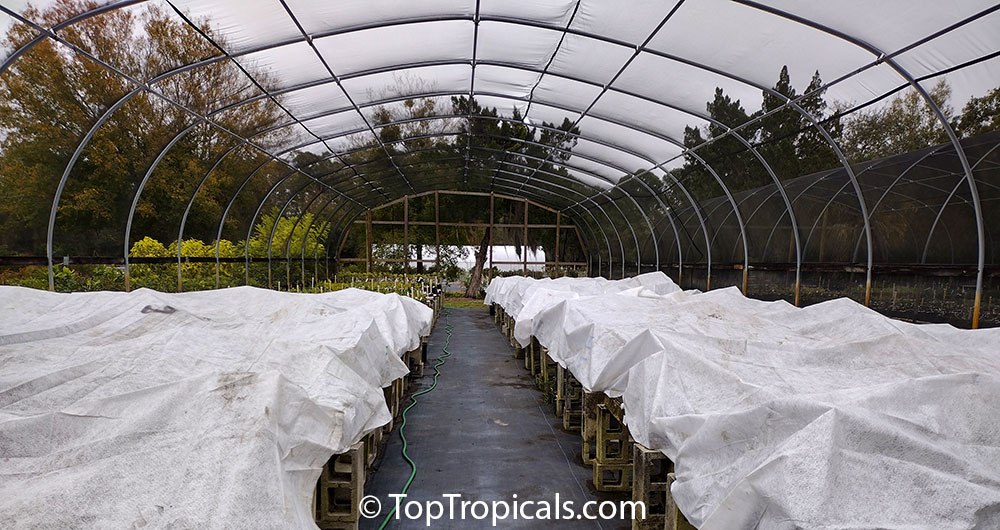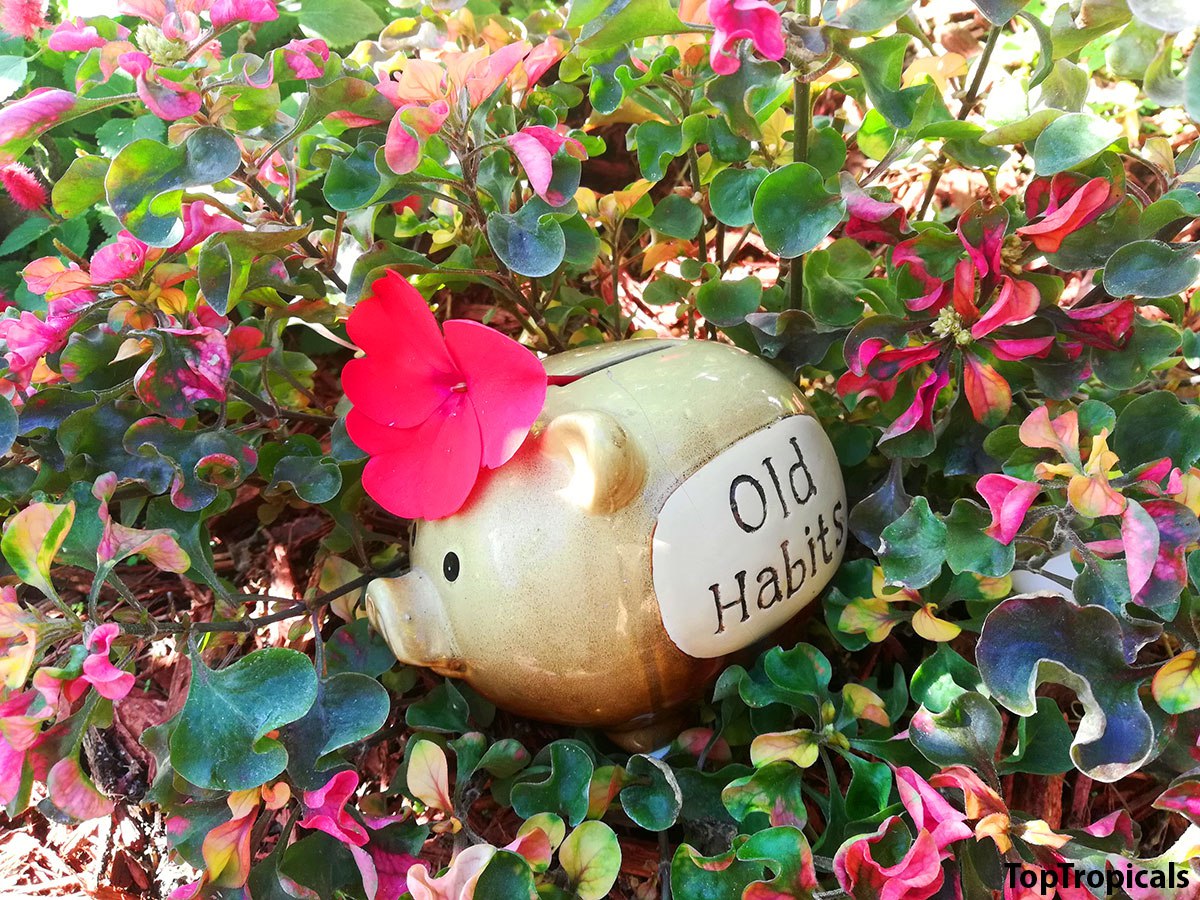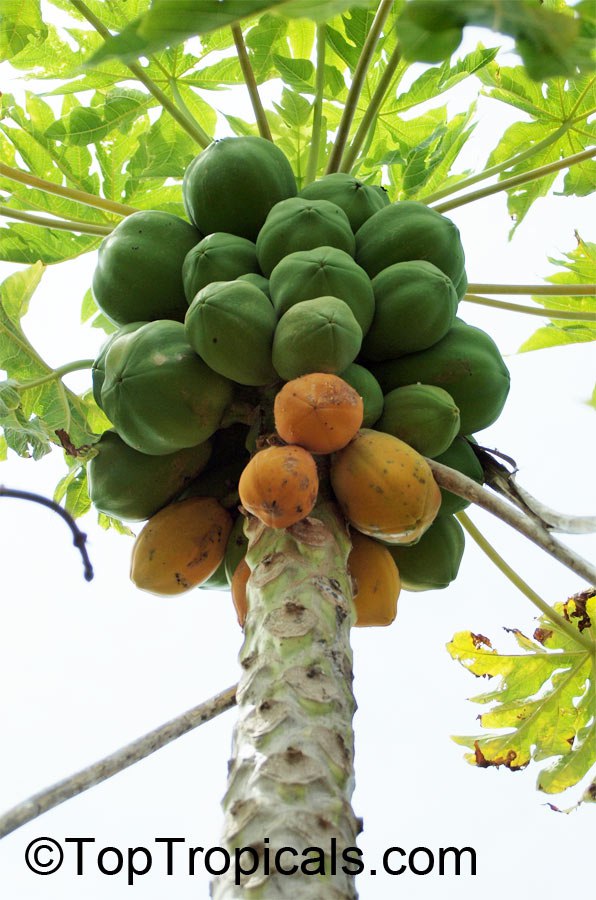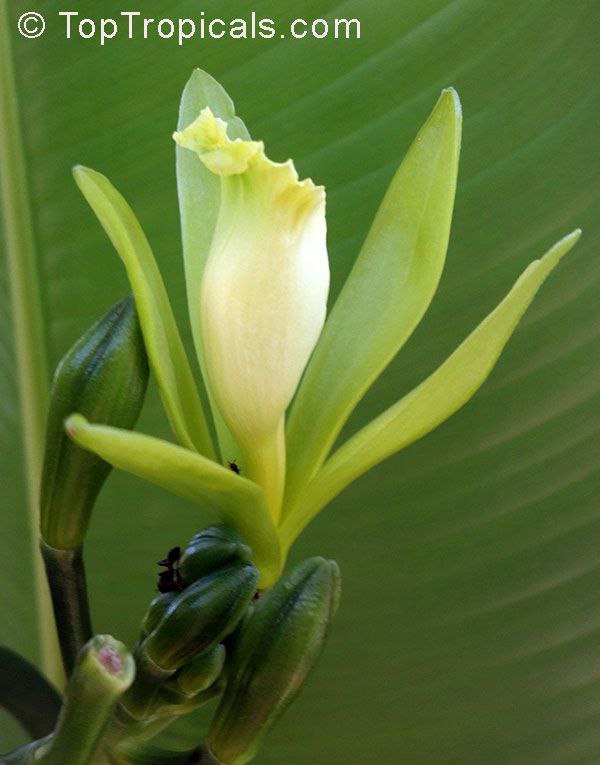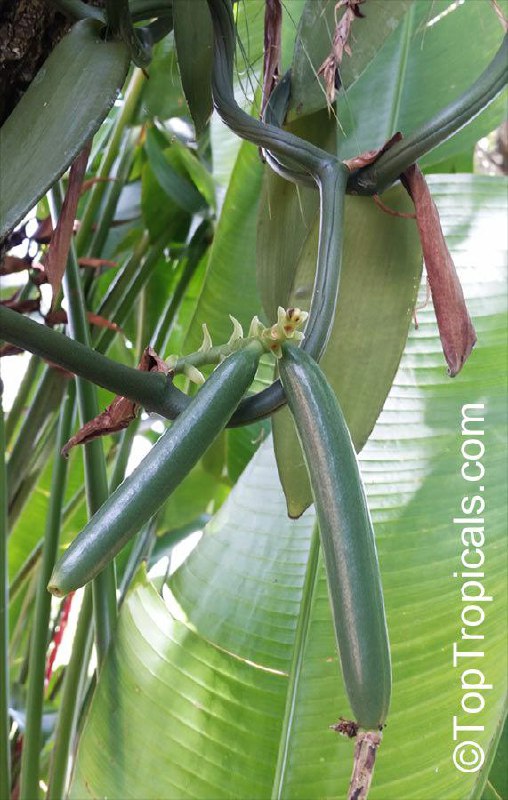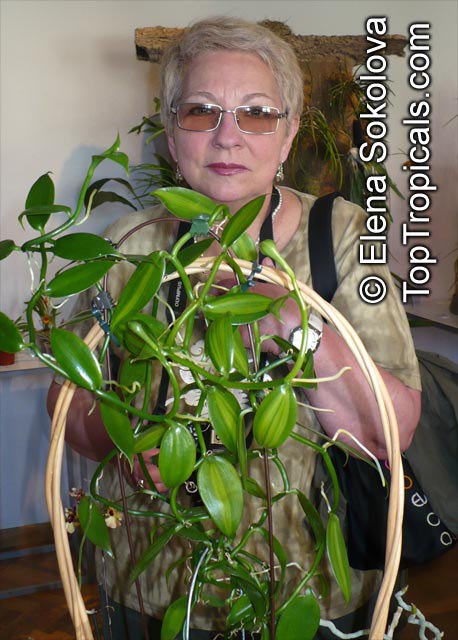Garden Blog - Top Tropicals
If you want to grow your own vanilla orchid, this is how to plant it
Vanilla Bean Orchid (Vanilla planifolia) growing in pots
- ⚡️ The Vanilla Bean Orchid (Vanilla planifolia) is a source of Vanilla extract. If you're interested in growing your own Vanilla , here's how to get started:
- ⚡️ Begin by planting your young Vanilla Bean Orchid in a pot using regular potting soil, accompanied by a small trellis for support.
- ⚡️ Initially, the plant will establish itself in the pot, but as it matures, it develops aerial roots and gradually becomes more epiphytic, relying on support structures rather than the soil.
- ⚡️ As your orchid grows, it will require a larger trellis, a log, or a burlap-covered board to facilitate its natural climbing behavior.
- ⚡️ Once the plant is well-established and its aerial roots have developed on the support surface, it will be ready to flower and produce vanilla beans. This setup mimics the orchid's natural environment and supports its growth and fruiting process.
📚 Learn more from previous posts:
How to grow your own vanilla orchid at home
The Secret of how to Make Vanilla Orchid bloom
🛒 Shop Vanilla Bean Orchids
#Shade_Garden #How_to #Container_garden
🔴 Join 👉 TopTropicals
How to grow Mandevilla: Practical Guide to Growing Mandevilla Vine
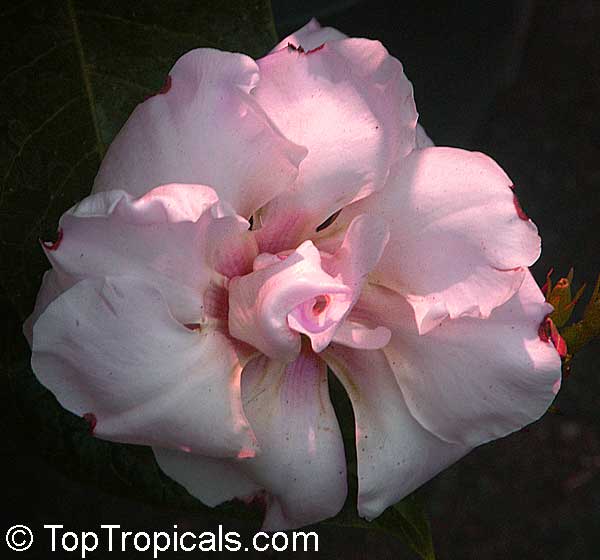
Mandevilla amabilis Thai Rose
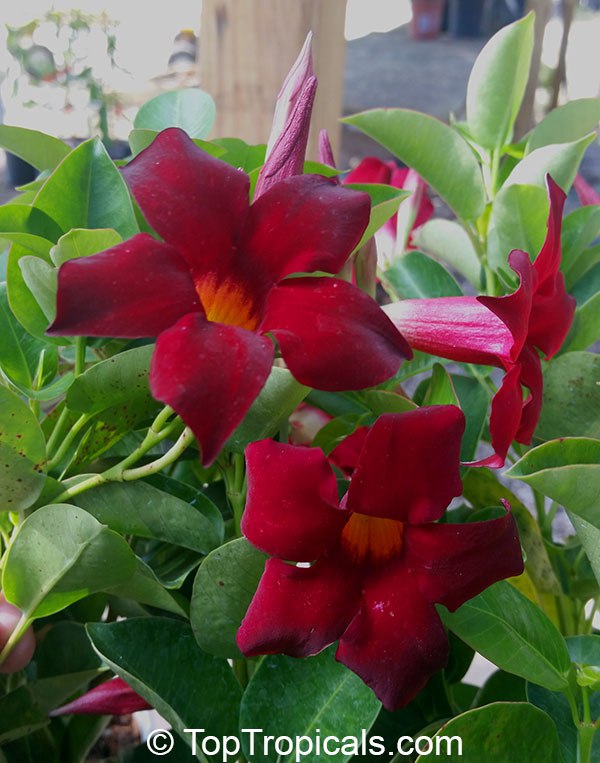
Mandevilla Sun Parasol Crimson
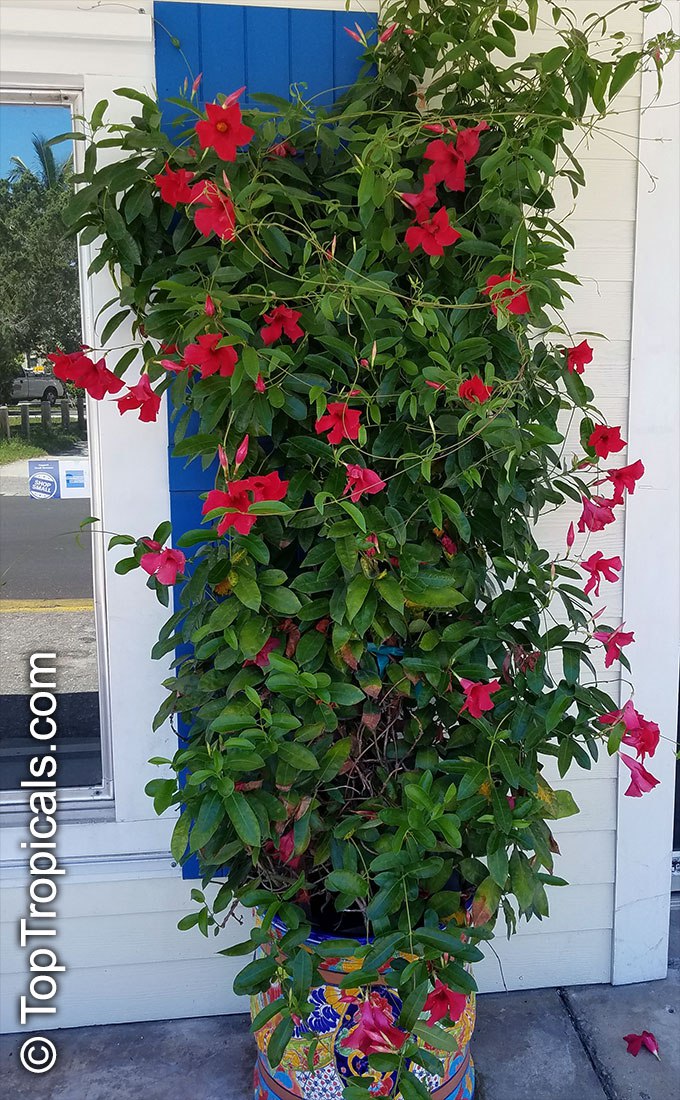
Mandevilla Sun Parasol Crimson on a trellis

Mandevilla amabilis Thai Rose
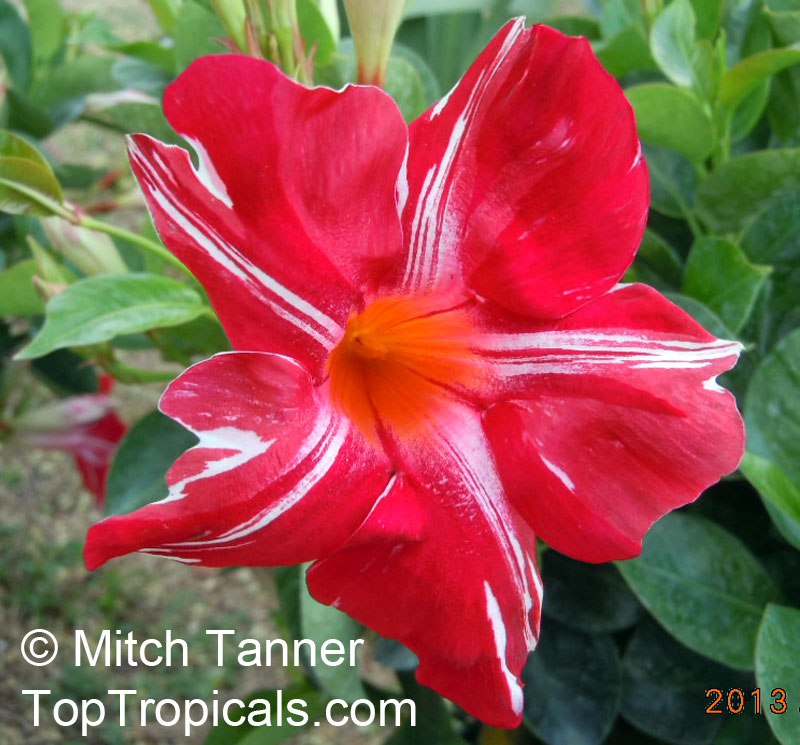
Mandevilla Stars and Stripes
- 🌺 Mandevilla is a tropical vine known for its vibrant, trumpet-shaped flowers that bloom throughout the warm months. This fast-growing climber thrives in warm climates and adds a stunning display of color to gardens and patios.
- 🌺 Difference Between Mandevilla and Dipladenia
- 🌺 Growing in the Ground
The names Mandevilla and Dipladenia are often used interchangeably, creating confusion. While they are closely related, there are key differences. Mandevilla is a vigorous woody vine with large, stiff leaves, ideal for trellises and fences. Dipladenia, on the other hand, has a more compact growth habit with smaller, smooth leaves. Dipladenia can be also trained on a trellis but also thrives in hanging baskets or as a compact specimen plant. As a bushier type of Mandevilla, its smaller, more compact varieties are excellent for mixed containers.
💋Soil. Mandevilla prefers well-draining soil enriched with organic matter. A mix of garden soil, compost, and sand ensures good drainage and fertility. Both Mandevilla and Dipladenia require acidic soil. If your native soil contains limestone, consider growing them in containers with a peat-based potting mix to maintain a lower pH.
- 💋Light. Plant in a location with full sun to partial shade; at least 6 hours of direct sunlight promotes the best blooms.
- 💋Feeding and Encouraging More Blooms: Feed Mandevilla with Sunshine Boosters Megaflor with every watering to encourage more blooms. Prune lightly after flowering to promote new growth and continuous flowering.
Water Mandevilla regularly, keeping the soil moist but not soggy. During hot months, water deeply a few times a week. Reduce watering in cooler seasons.
- 🌺 Most Interesting Varieties
Mandevilla flowers come in a wide range of colors, including shades of red, mauve, pink, white, and even yellow. For vibrant color and impact, consider these varieties:
💋Mandevilla ‘Alice du Pont’– A classic pink variety with large flowers and vigorous growth.
- 💋Mandevilla ‘Sun Parasol’ Series – Offers compact plants in deep red, pink, or white, great for containers or small spaces.
- 💋Mandevilla ‘Crimson Red’– Deep red blooms stand out against glossy green foliage.
- 💋Dipladenia ‘Stars and Stripes’ - features striking red-and-white striped blooms.
In Florida, Sun Parasol and Alice du Pont perform exceptionally well, thriving in the heat and humidity while providing season-long blooms.
- 🌺 Pests and Problems
Mandevilla is relatively pest-resistant but can attract aphids, spider mites, and whiteflies. To manage pests:
💋Spray with a neem oil solution weekly if pests are present.
- 💋Encourage beneficial insects like ladybugs to control aphids naturally.
- 💋Remove affected leaves and rinse plants with a strong stream of water.
- 💋Watch for fungal diseases in humid climates; ensure good air circulation and avoid overhead watering.
🌺 Growing Mandevilla in Pots and Winter Care
Mandevilla grows beautifully in containers, making it a great option for cooler climates where it can be brought indoors for winter.
- 💋Pot Growing Tips:
· Use a well-draining potting mix with added perlite for aeration.
- · Choose a pot at least 12-16 inches in diameter, with several drainage holes, for vigorous growth.
- · Water when the top inch of soil feels dry, avoiding waterlogged conditions.
💋Winter Care:
- · In regions with frost, move potted Mandevilla indoors to a bright, cool location (50-60°F).
- · Reduce watering and stop fertilizing during cooler season.
- · Prune lightly before bringing indoors to maintain shape and size.
- · Repotting: Repot every 2-3 years in early spring before active growth begins, refreshing the soil and upgrading to a slightly larger container if needed.
With the right care, Mandevilla provides stunning, long-lasting blooms and thrives in gardens or pots, making it a versatile and rewarding addition to any space.
📚 Learn more from previous post:
How to overwinter Mandevilla indoors
🛒 Shop flowering vines
#How_to #Container_Garden #Hedges_with_benefits
🔴 Join 👉 TopTropicals
How to Grow Jackfruit: Practical Guide
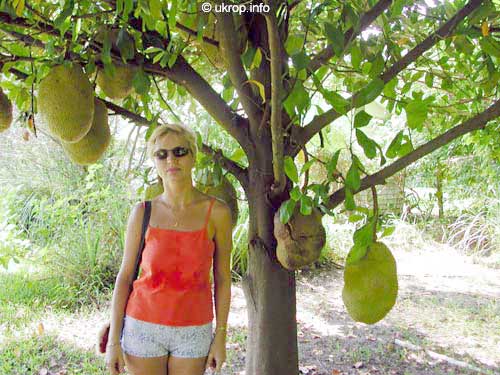
Jackfruit (Artocarpus heterophyllus) tree

Jackfruit (Artocarpus heterophyllus) fruit

Jackfruit (Artocarpus heterophyllus) fruit at the base of the tree
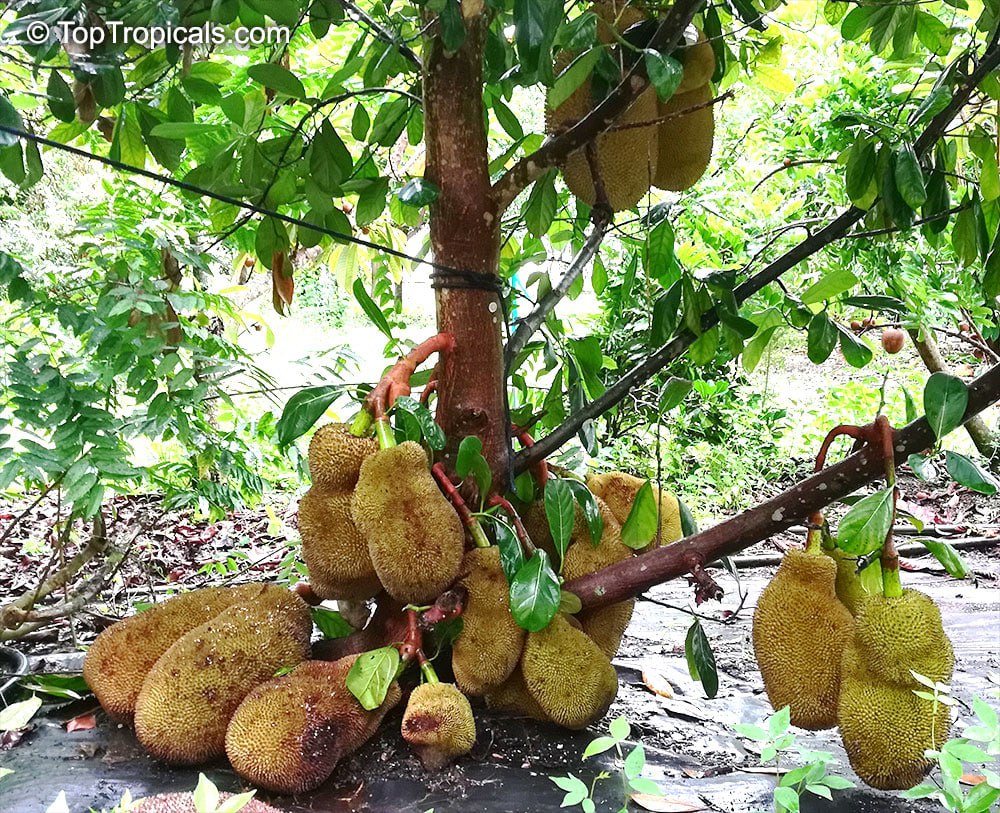
Jackfruit (Artocarpus heterophyllus) fruit at the base of the tree
- 🍈 Jackfruit (Artocarpus heterophyllus) is a tropical tree that produces the largest fruit in the world, weighing up to 80 pounds and reaching 36 inches in length. The trees thrive in frost-free, humid climates with plenty of sunlight. They require well-draining soil rich in organic matter and regular watering to flourish. Despite their reputation as ultra-tropical, mature Jackfruit trees can tolerate light frost for a few hours without significant damage. Additionally, they can be grown in containers in colder areas with proper care and pruning.
- 🍈 What Climate is Essential for Growing Jackfruit Trees?
- 🍈 How Often Do Trees Need Fertilizing, and What is the Best Type of Feed?
- 🍈 How Important is Pruning, and When is the Right Time to Prune?
- 🍈 Key Tips for Successful Jackfruit Production
Jackfruit trees require a tropical or subtropical climate, with temperatures ideally between 60-95°F. While young trees are frost-sensitive, mature trees can withstand light frost for short periods. However, cold winters can reduce fruit production. Frost-free temperatures are crucial for optimal growth and fruiting.
Jackfruit trees are heavy feeders. Fertilizing them regularly is key to their health and productivity. During the active growing season (spring to fall), apply a balanced dry fertilizer once a month. Liquid amino-acid-based fertilizers, such as Sunshine Boosters, can be used year-round with every watering. These fertilizers help maintain healthy growth and encourage abundant fruiting. Supplement with organic matter like compost, manure, or peat moss to enrich the soil.
Pruning is essential for maintaining a manageable tree size and promoting healthy fruit production. Jackfruit trees produce fruit at the base of the trunk, allowing them to be pruned annually to a height of 7-12 feet. This practice not only makes harvesting easier but also encourages more fruiting. Prune after the fruiting season or in late fall to remove excess growth and shape the tree. Regular pruning also improves air circulation and reduces the risk of disease.
- · Climate: Ensure frost-free temperatures and adequate humidity.
- · Soil: Use well-draining soil enriched with organic matter.
- · Watering: Maintain consistent soil moisture without waterlogging.
- · Pruning: Keep the tree under 7-10 feet for easier management and better yield.
- · Fertilizing: Apply balanced fertilizers and supplements regularly.
🍈 Jackfruit facts
- · The fruit consists of large, edible bulbs of yellow, sweet, banana-pineapple-flavored aromatic flesh.
- · Seedlings start fruiting within 3-4 years, with fruit ripening 4-6 months after flowering.
- · A mature tree can produce up to 200 pounds of fruit annually.
- · For colder regions, growing Jackfruit in containers is an option, provided the tree is regularly pruned and topped.
👍 Jackfruit trees grow fast and fruit abundantly with proper care, making them an exotic addition to tropical fruit collections.
📚 From previous posts:
The largest tree-borne fruit in the world
How to grow the biggest fruit on Earth
🛒 Plant your own Jackfruit
#Food_Forest #How_to
🔴 Join 👉 TopTropicals
Why my Lychee tree is not producing fruit and why I cant grow a Lychee tree from a seed?
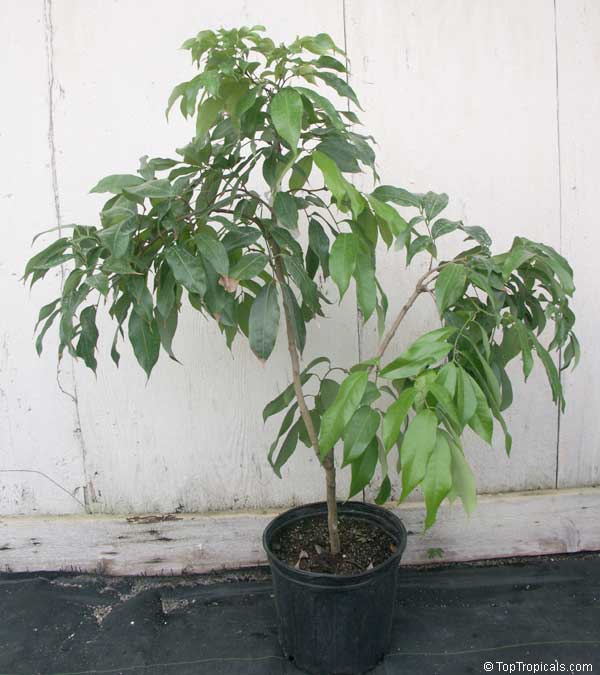
Lychee tree in a pot, Litchi chinensis
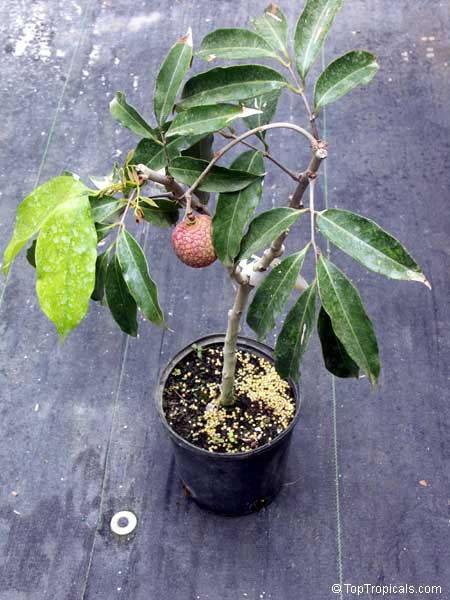
Lychee tree in a pot with fruit, Litchi chinensis
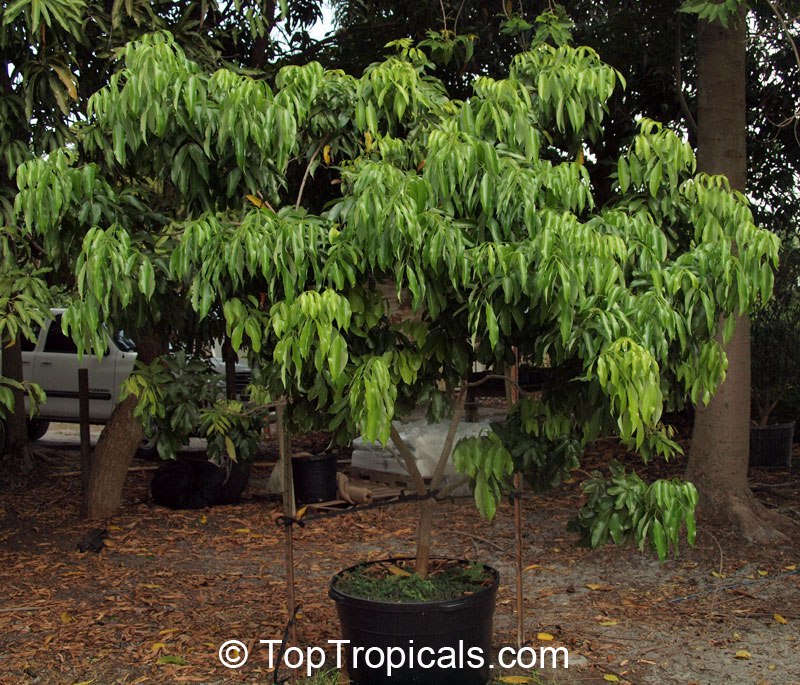
Lychee tree in a pot, Litchi chinensis
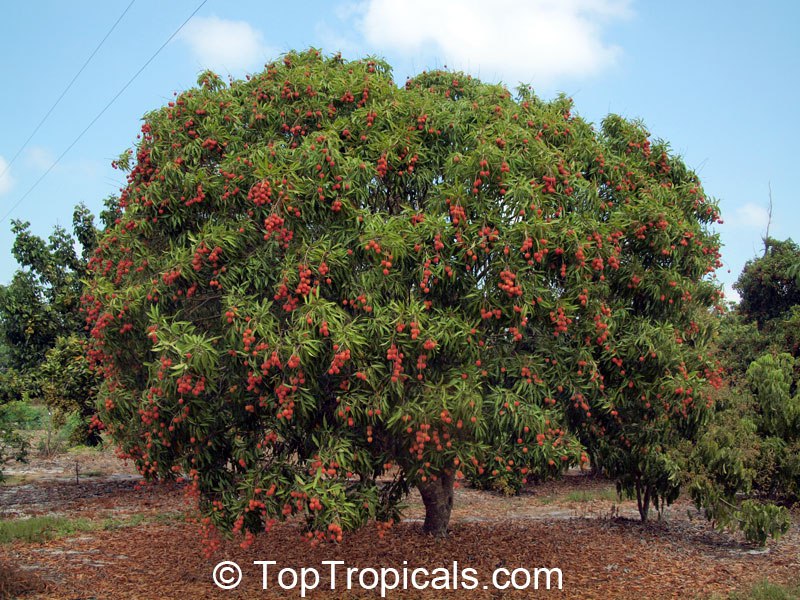
Lychee tree, Litchi chinensis
Practical advice on propagation and harvest- for the previous post 👆
- 🍑 Propagation and mycorrhiza
- 💋 Mycorrhiza is a symbiotic relationship between a fungus and plant roots. In a Lychee orchard, mycorrhiza plays a crucial role by enhancing the nutrient uptake of lychee trees, particularly phosphorus, leading to better growth and fruit production, especially in soils with low phosphorus availability.
- 💋Lychee trees are typically propagated by air layering, as they cannot be propagated effectively by seeds or grafting.
- 💋Lychee seedlings do not grow well because they require a special mycorrhizal environment that, in nature, is only provided under a mature mother tree. This dependency on mycorrhiza explains why lychee seedlings lack vigor and cannot serve as rootstocks for grafting.
- 💋If you have tried growing lychee from seed, you may have noticed that the seedling, after reaching a few inches in height, often stops growing or even shows signs of retarded growth. This is a clear indication of a lack of mycorrhiza.
- 💋The easiest way to have a healthy, productive Lychee tree, is to obtain a quality, air-layered tree from a reputable source.
🍑 Alternate Bearing in Lychee Trees
- 💋 Lychee trees often produce fruit every other year due to "alternate bearing", where the tree focuses on a heavy crop one year, leaving less energy for fruiting the next.
- 💋This cycle is influenced by weather, tree variety, and how flower buds develop alongside the current year's fruit. For example, "Mauritius" trees may bear fruit annually, while "Brewster" trees may produce a good crop only every 3-4 years.
By considering these factors and providing appropriate care, you can enjoy the beauty and bounty of a lychee tree in your garden.
📚 Learn more from previous posts:
The best varieties of Lychee
The best fruit in the world - grow your own Lychee tree
How to grow a Lychee tree
🛒 Shop Lychee trees
#Food_Forest #How_to
🔴 Join 👉 TopTropicals
How to grow a Lychee tree and have a reliable crop

Lychee fruit on a tree, Litchi chinensis
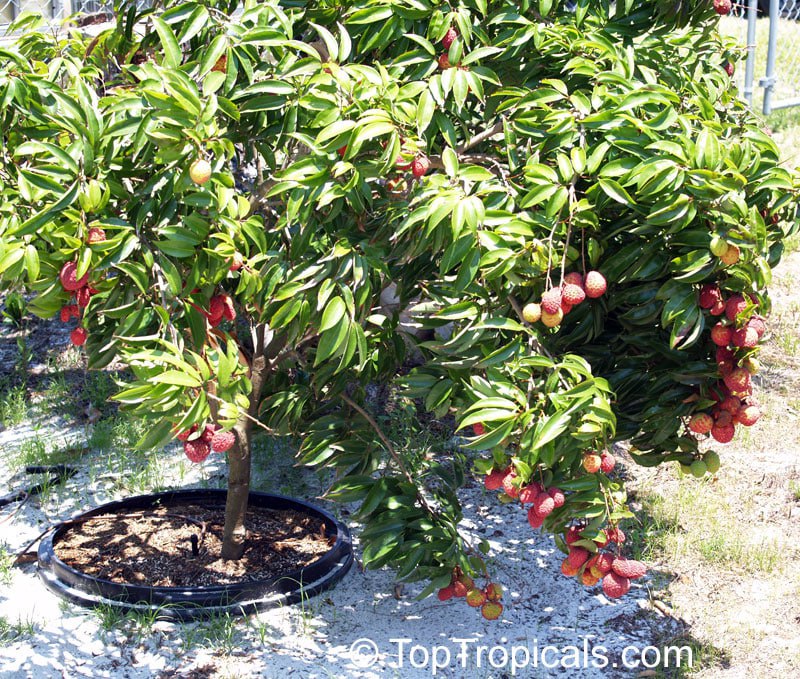
Lychee tree in a pot with fruit, Litchi chinensis
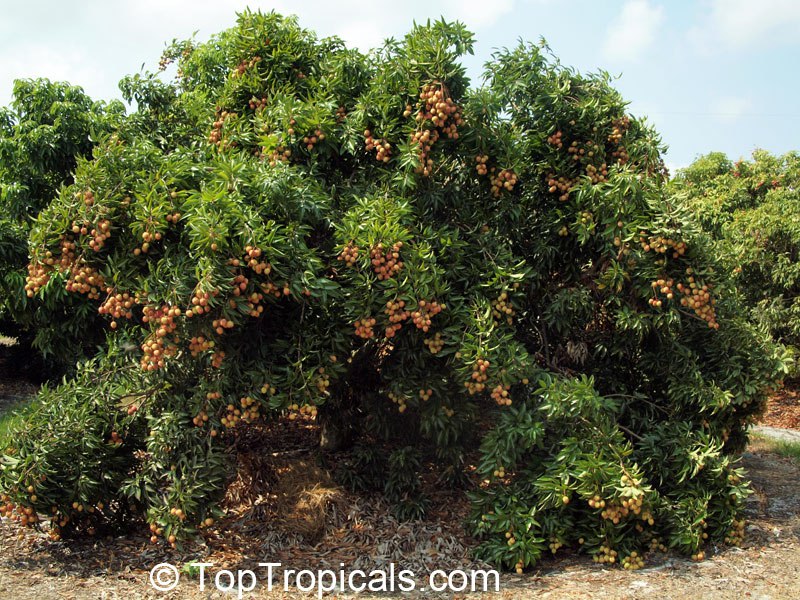
Lychee tree with fruit, Litchi chinensis
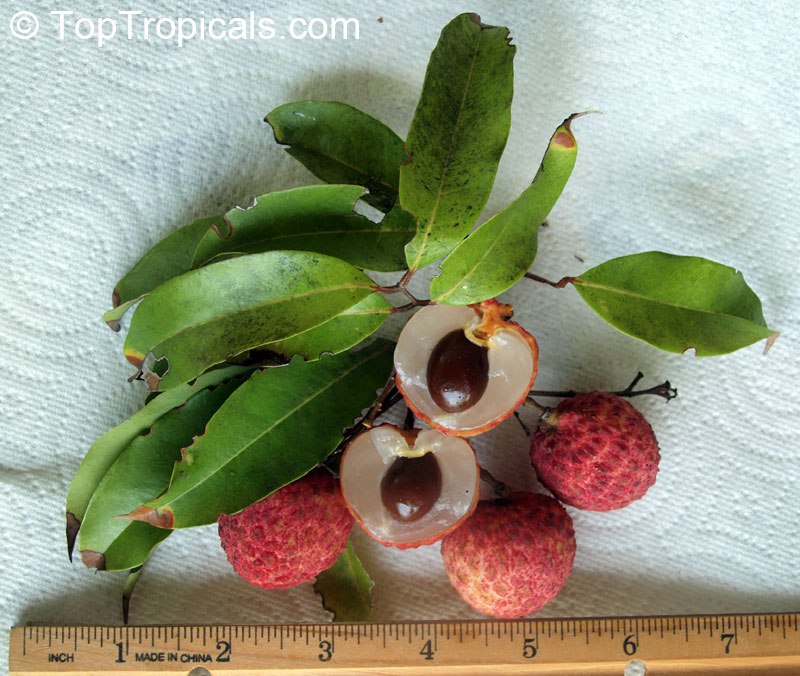
Lychee fruit, Litchi chinensis
- 🍑 Lychee (Litchi chinensis) is a tropical evergreen tree renowned for its delicious, aromatic fruit. Native to southern China, lychee trees can reach heights of up to 40 feet and are prized for their attractive foliage and bountiful fruit clusters.
- 🍑 Important factors to consider when planting a Lychee tree
- 💋Climate: Lychee trees thrive in tropical and subtropical climates with warm, humid summers and cool, dry winters. They require a period of winter chilling (100-200 hours between 32F and 45F) to induce flowering. Mature trees can tolerate temperatures as low as 25F, but young trees are susceptible to frost damage.
- 💋Sunlight: Plant lychee trees in full sun to ensure vigorous growth and optimal fruit production. They require at least six to eight hours of direct sunlight daily.
- 💋Soil: Well-drained, slightly acidic soils rich in organic matter are ideal. Avoid heavy clay soils or areas prone to waterlogging, as lychee trees are susceptible to root rot.
- 💋Spacing: Ensure adequate space for the tree's mature size by planting at least 20 feet away from other trees or structures.
- 🍑 When and how do you harvest lychee fruit?
- 💋Lychee trees typically begin to produce reliably after 3-5 years, with the fruit ripening in early summer.
- 💋Timing: Wait until the fruit's skin turns bright red or pink, indicating full ripeness. Lychees do not ripen off the tree, so it's essential to harvest at the right time.
- 💋Method: Use pruning shears to cut entire clusters, leaving a short stem attached to each fruit to prolong freshness. Handle the fruit gently to avoid bruising.
- 💋Post-Harvest: Consume fresh lychees within a few days or store them in the refrigerator to extend shelf life. The skin may darken when refrigerated, but the fruit's quality remains unaffected.
- 🍑 How to grow a Lychee tree?
- 💋Watering: Provide consistent moisture, especially during dry periods. However, avoid overwatering, as lychee trees are sensitive to waterlogged conditions. Mulching around the base helps retain moisture and regulate soil temperature.
- 💋Fertilization: Apply a balanced fertilizer during the growing season to support healthy growth and fruit development. Avoid excessive nitrogen, which can inhibit flowering. Sunshine Boosters C-Cibus - natural liquid fertilizer - is the best choice, and is safe to use with every watering year around.
- 💋Pruning: Minimal pruning is required. Remove dead or diseased branches and shape the tree to maintain its structure. Pruning after harvest can encourage new growth.
🍑 More practical advice on propagation and harvest in next post 👇
🛒 Shop Lychee trees
#Food_Forest #How_to
🔴 Join 👉 TopTropicals

